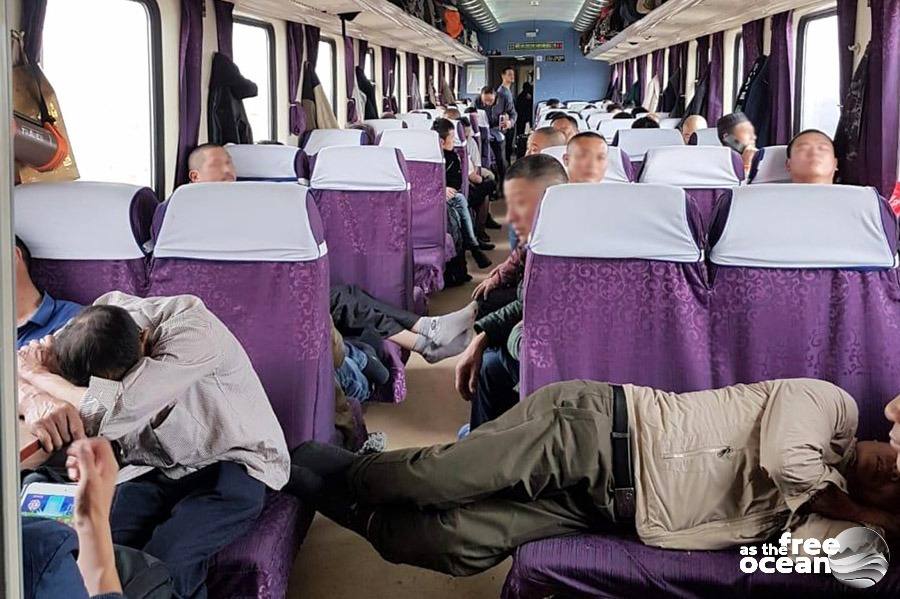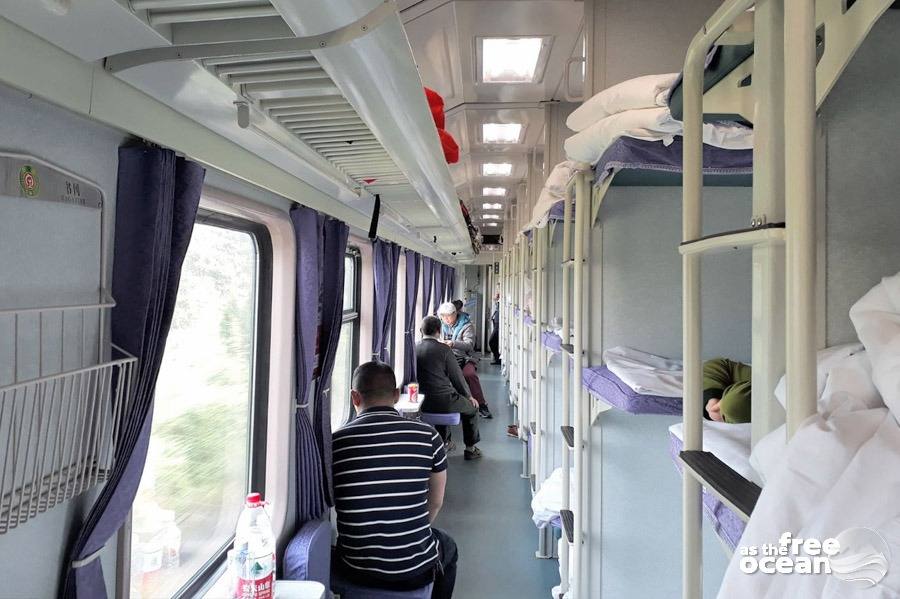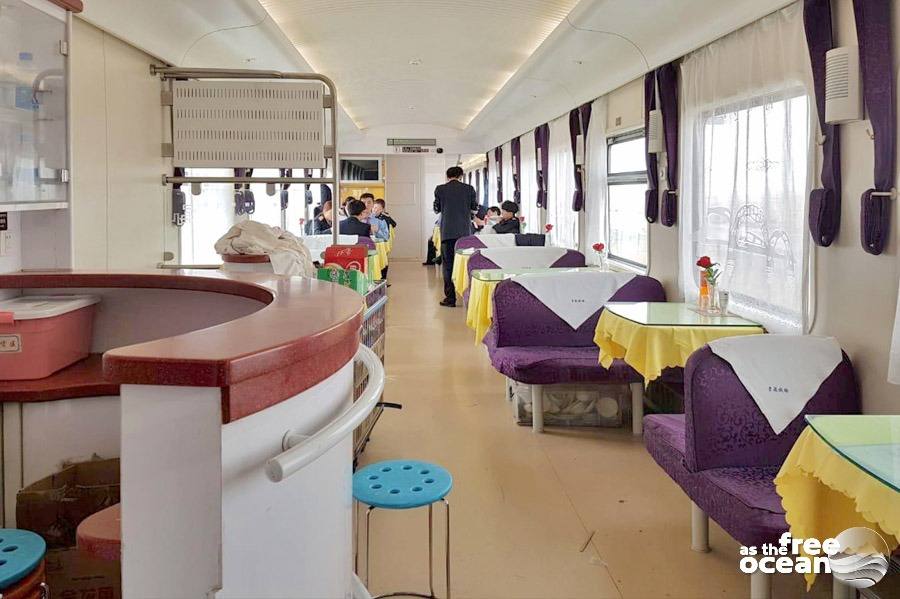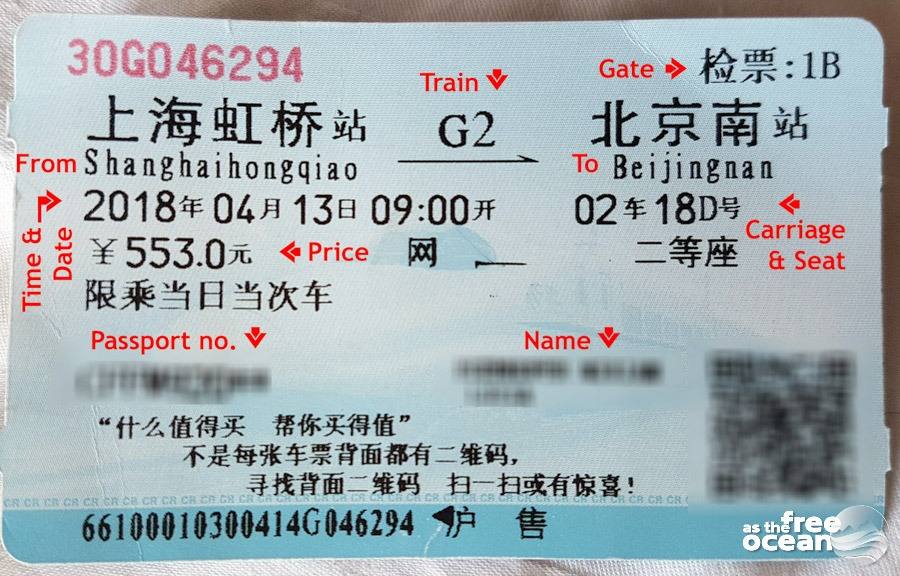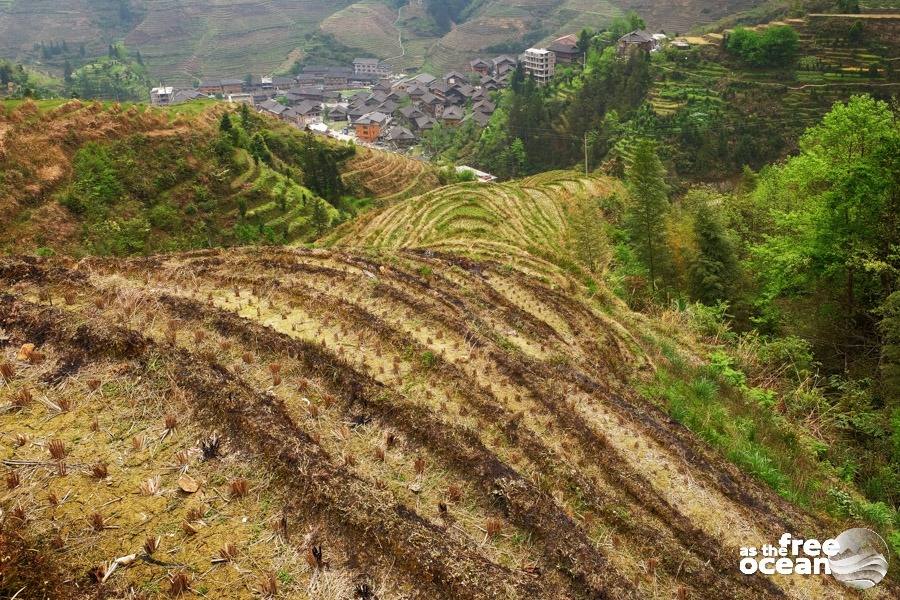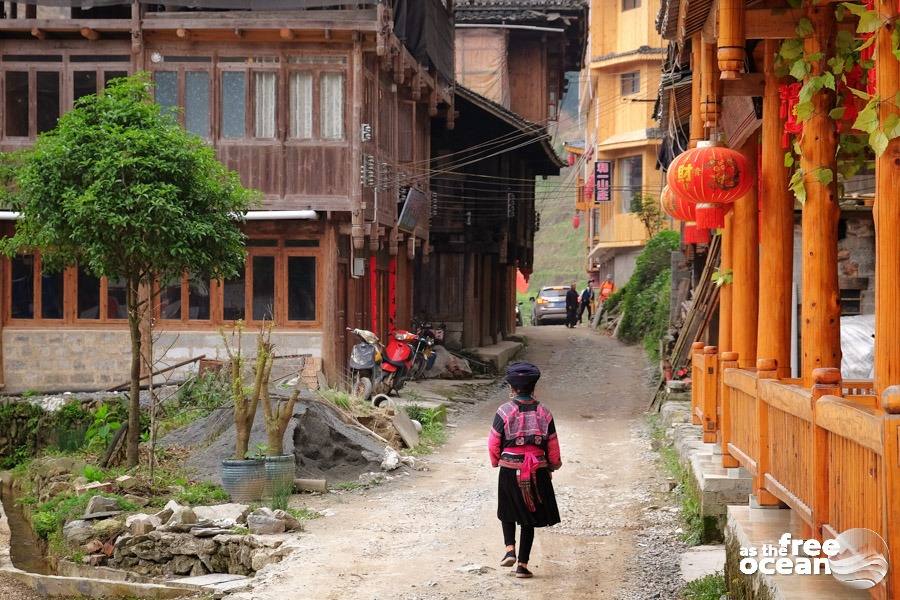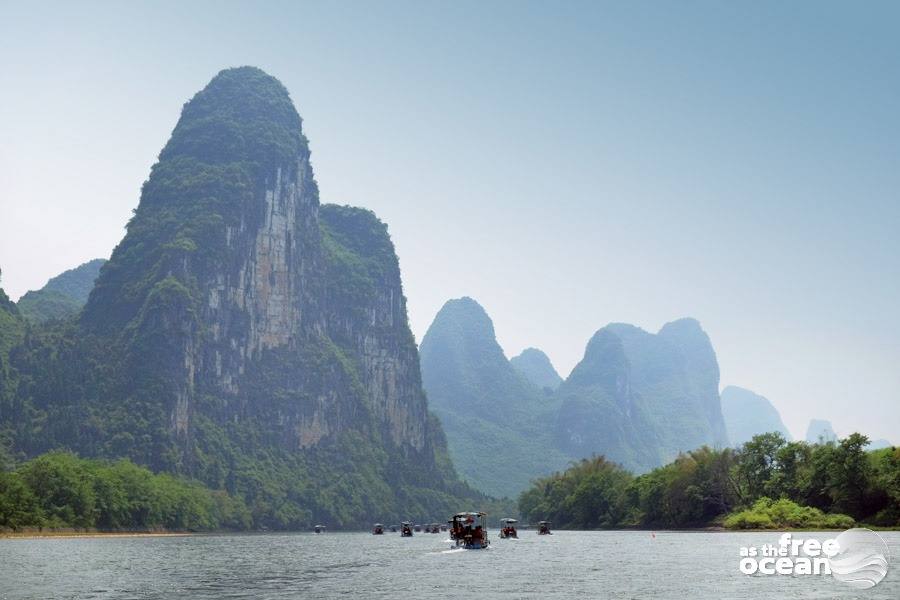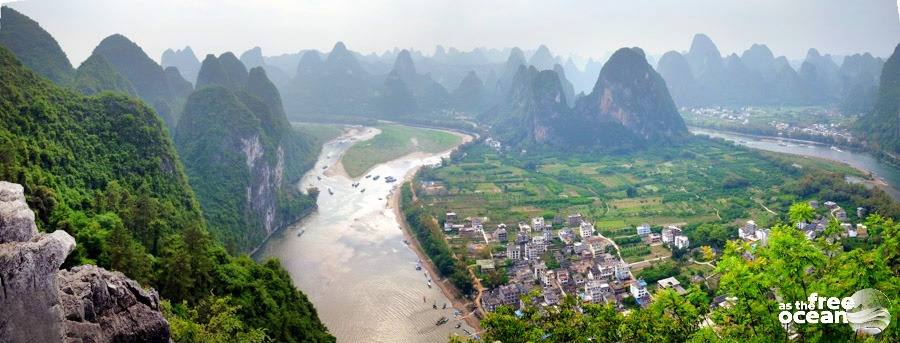After another train adventure in China, we finally arrived in Zhangjiajie, a town located in northwestern Hunan Province, home to Wulingyuan Natural Park (Zhangjiajie National Park).
While telling people about our trip to Zhangjiajie, we realized many question marks appearing, but words like “Avatar” and “Floating Mountains of Pandora” helped them understand better what our destination was about. And indeed, I felt the same way when Alex told me about it for the first time.
How to reach Zhangjiajie
The best way to reach the city is by train or plane. The airport has connections to 35 domestic airports, as well as flights to Seoul, Taiwan and Bangkok. By train, Zhangjiajie can be reached via 29 cities. Both the airport and the train station are not far from the city center.
The best time to travel to this region in China is April or October-November. We would not recommend traveling during Chinese holidays or in the hot summer months. Apart from the amazing natural stone formations, there is much more to see, from the longest and highest glass bridge to the longest cable car in the world.
Wulingyuan Natural Park – The core scenic area of Zhangjiajie
Our focus was the National Park of Zhangjiajie (Wulingyuan), which belongs to the list of UNESCO World Heritage since 1992. The most beautiful parts of the park are Zhangjiajie National Forest Park, Suoxiyu Viewpoint, Tianzi Mountain Viewpoint and Yangjiajie Viewpoint. But with so much choice, how should you plan the visit there? We faced exactly the same question when we planned our trip to the park.
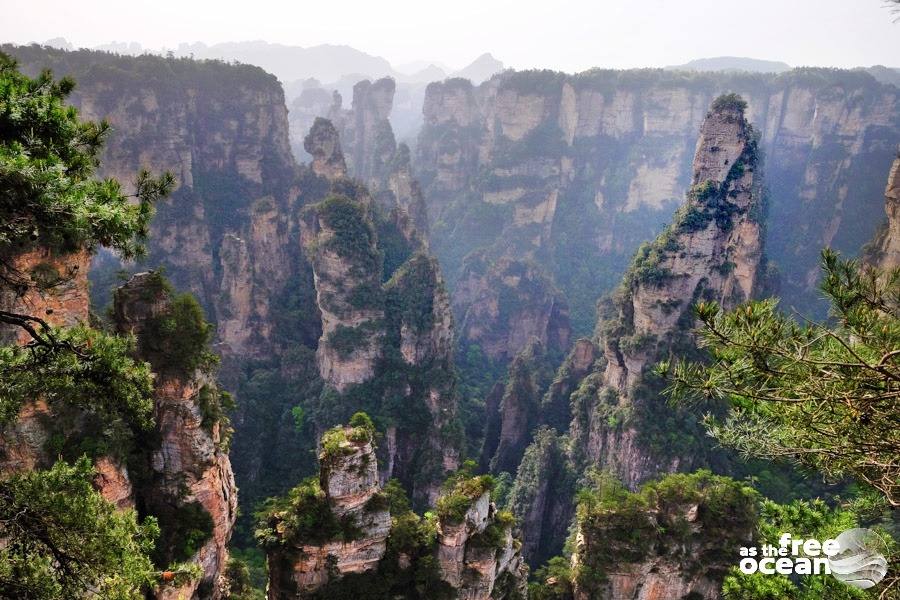
Here is a possible suggestion
Unfortunately, we have not planned much time in the city because our visa in China only forced us to follow a tight schedule. We stayed a total of 3 nights, one of them in the park itself. The hotel in Zhangjiajie cost us 10 Euro for a private room per night and for the meals we mainly paid less than 2 Euro each. In China, we enjoyed going to local food stalls, as we often could choose what goes into the WOK and, above all, the prices were really cheap.
On the day of our arrival, we did not do much, apart from walking around the area where we stayed. On the second day, we went by bus from the stop next to the central train station to the Zhangjiajie National Park. At the bus station, you only need to go to the tourist buses, which leave at regular intervals (about every 10 – 15 minutes) towards the park, which takes about 50 minutes and costs about 2.60 Euro (20 RMB). It is best if you look up the Chinese name on the internet before you go, so you can ask for the bus, in case you don’t find it easily.
Once in Wulingyuan, you can either catch another bus to one of the other park entrances (which are very good indicated) or walk to Wujiayu Ticket Station. We recommend using the offline map of maps.me, because Google Apps do not work in China.
The tickets are quite expensive, with a cost of 32 Euro (245 RMB) per adult, but valid for 4 days. In the park itself you pay extra for cable cars, lifts and some other attractions. At the information desk is a map with all the prices, which is very helpful to guide you. The ticket is a magnetic card, which is matched with the fingerprint at the entrance and allows access for the next few days.
Free buses in the park
Just right behind the entrance, you will find the purple buses, which are available for free in the park. We took the bus to our first highlight, the Tianzi Mountain Cable Car. The ride by cable car had a cost of 9.50 Euro (72 RMB) per person, which we found a bit expensive, but later the view of the sandstone rocks felt very compensating for the price.
From there we took the bus that brought us to Tianzishan Scenic Office, where we started our walk towards the station of the Ten-Mille Gallery Tram Bahn. The beautiful path leads from here mainly downhill and is therefore easy. Once we arrived at the station we preferred to go for the 30 minutes walk instead of using the tram.
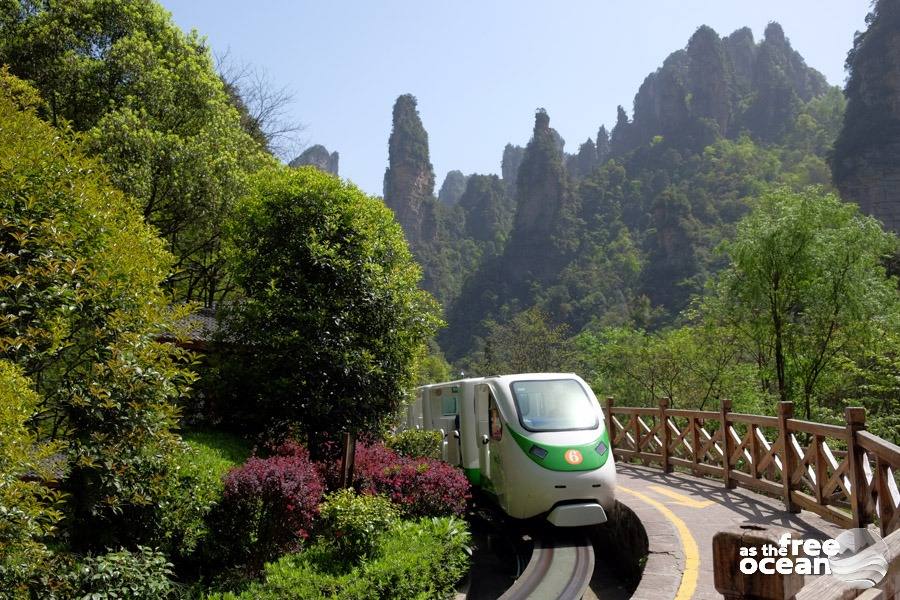
We continued by bus to the “Four Streams Crossroad”. Beware, there are two bus stations, do not take the wrong one that leads you towards the exit. We stopped by the river for a moment, then headed for the elevator.
The Bailong Elevator is the largest and fastest outdoor lift in the world. As for the cable car, we paid 9.50 Euro (72 RMB) and shortly after we were catapulted 3 m per second towards the sky. Once at the top, we were rewarded with a spectacular view and so we came closer to our highlight of the day.
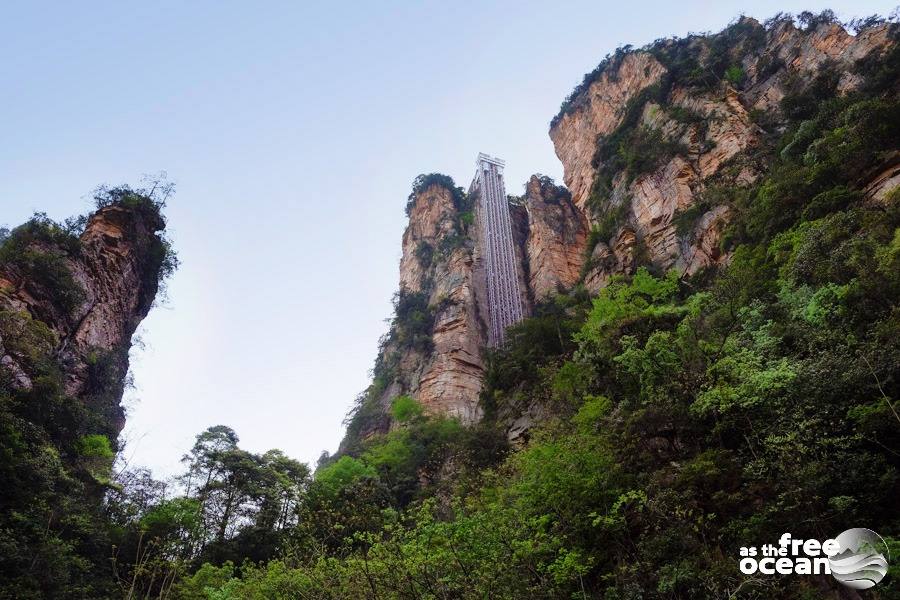
The world of Pandora
Only a short bus ride separated us from the “Floating Avatar Mountains”. Here we realized that it was a bit more crowded than in the other areas. Still, we were incredibly lucky, there were only a few people all day long and so we did not have to queue at all. It is said that about 30,000 visitors visit the attractions around Zhangjiajie every day, but that wasn’t noticeable.
The Avatar Mountains are especially beautiful and it is not surprising why this place inspired the movie of James Cameron. It is almost impossible to capture in a photo the feeling inspired by these gigantic sandstone rock formations. It was really impressive.
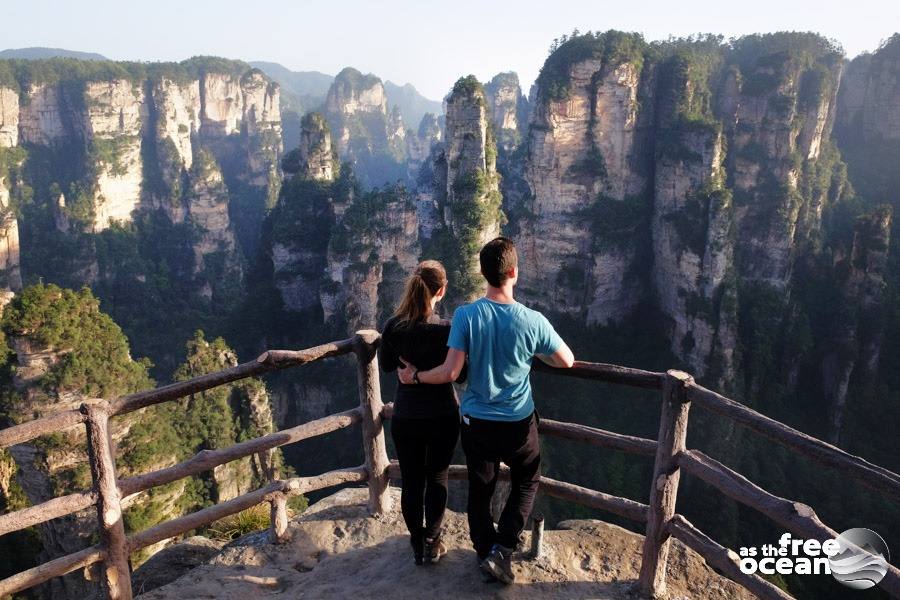
Here we stayed for a while and watched the monkeys, before taking the bus to the hostel… Well, at least that’s what we thought we were doing. When we arrived at the bus stop at 6 pm, we were told that the buses were only going in one direction, which surprised us because in the brochure it was clearly indicated that the buses would run until 7 pm. Nobody could answer us why buses wouldn’t go also in the other direction. Of course, we could have gone the other way and looked for a place to stay in Wulingyuan, but that would mean to pay again for the elevator in order to leave the park.
Lost in the national park
For a short moment, we did not know what to do, when a nice old lady appeared and asked if we need accommodation. Probably it happens quite often that visitors stayed behind in the park.
The woman gave us a fair price and took us to her house, which was in the middle of the park and everyone there was very friendly. Alex and I got a nice room with super-fast wifi (one of the best we had in China) and something to eat. We enjoyed the silence that took over the park and were very happy that we could cancel our originally booked hostel.
Day two in Pandora
The next morning we took advantage of the good location and left the accommodation already at 8.00 am. We enjoyed the emptiness of the park and returned to the “Floating Avatar Mountains”, which looked different in the morning light.
We took the bus to another area of the park, with the plan to enjoy the view at Yangjiajie Station and from there the path led us to the lower cable car station, from where the bus took us to the exit of the park (Yangjiajie Ticket Station).
After a 15 minute walk, we found the bus that took us back to Zhangjiajie. Despite the shorter distance, the trip took a bit longer than from Wujiayu Ticket Station due to the bad road conditions.
Our conclusion of the park: Not very budget-friendly, but definitely very impressive and worth seeing. We would recommend at least 1 night in the park or nearby.
More pictures of China you will find in our gallery.

